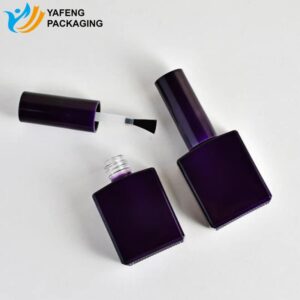
Noticias y blog
Las grandes cosas en los negocios nunca las hace una sola persona. Las hace un equipo de personas. Tenemos ese grupo dinámico de personas
La industria de la belleza se enfrenta a un creciente escrutinio por su dependencia de los envases de plástico y los residuos resultantes. Este artículo explora los retos que plantean los envases de plástico en la industria cosmética, examina los actuales esfuerzos de reciclaje y analiza posibles soluciones sostenibles para los envases. Siga leyendo para comprender las complejidades del problema de los envases cosméticos y descubrir cómo la industria de la belleza puede avanzar hacia un futuro más sostenible.

La industria cosmética recurre en gran medida al plástico para sus envases debido a varios factores clave. Plástico es ligero, duradero y relativamente barato de producir, lo que lo convierte en una opción atractiva para los fabricantes que buscan minimizar costes y proteger productos de belleza durante el transporte y la manipulación. Además, plástico ofrece excelentes propiedades de barrera, impidiendo las fugas y la contaminación, lo que es crucial para mantener la integridad del productos cosméticos. Plástico también se pueden moldear fácilmente en diversas formas y tamaños, lo que permite crear productos visualmente atractivos y funcionales diseño de envases que atrae a los consumidores. Esta flexibilidad es esencial en un sector tan competitivo como mercado cosméticodonde el atractivo de los lineales desempeña un papel importante en las decisiones de compra.
La funcionalidad que envases de plástico ofertas es una de las principales razones de su uso. Empresas cosméticas necesitan materiales resistentes a la humedad, los aceites y otros ingredientes habituales en cosmética formulaciones. Plástico proporciona esta protección, garantizando la producto cosmético permanece estable y eficaz durante toda su vida útil. Alternativa materiales de envasado como el vidrio o el aluminio pueden ser más caros y pesados, lo que aumenta los costes de producción y transporte. Mientras que envases de papel es una opción, a menudo carece de las propiedades de barrera necesarias para proteger adecuadamente productos cosméticos. En envases de plástico también ofrece capacidades superiores de impresión y etiquetado, lo que permite marcas de belleza para comunicar eficazmente a los consumidores la información sobre los productos y los mensajes de la marca.
En impacto medioambiental de la industria de la belleza es significativo, principalmente debido a la gran cantidad de envases que genera. Residuos plásticos de envases de cosméticos contribuye a contaminación de varias maneras. Una parte sustancial de paquetes cosméticos termina en vertedero donde puede tardar cientos de años en descomponerse. Durante este tiempo, plásticos pueden filtrar sustancias químicas nocivas al suelo y al agua, contribuyendo aún más a la contaminación. Además, residuos plásticos que no se gestiona adecuadamente puede acabar en los océanos, dañando la vida marina y los ecosistemas. El sitio eliminación de productos de belleza y sus correspondientes envasado plantea un serio desafío a gestión de residuos sistemas a escala mundial.
Más allá de lo inmediato contaminación causada por residuos plásticosla producción de plástico también tiene un considerable impacto medioambiental. La extracción y el refinado de combustibles fósiles, que son la materia prima de la mayoría de los plásticosliberan gases de efecto invernadero a la atmósfera, contribuyendo al cambio climático. El propio proceso de fabricación consume una cantidad considerable de energía y agua, lo que contribuye aún más al impacto medioambiental. Incluso cuando plásticos son reciclarEl proceso de reciclaje requiere energía y recursos, y no todos plástico puede ser eficaz reciclar. El efecto acumulativo de estos factores hace que el problema de embalaje dentro del industria de la belleza un problema acuciante que exige atención urgente y soluciones sostenibles.
En industria de la bellezaLa contribución de contaminación por plásticos es considerable y va en aumento. El sitio industria cosmética genera miles de millones de unidades de envasado anualmente, siendo un porcentaje significativo envases de un solo uso. Residuos de envases de plástico del industria de la belleza productos y envases contribuye significativamente al flujo mundial de residuos, lo que añade presión a la ya sobrecargada gestión de residuos sistemas. El enorme volumen de envases utilizados en cosméticos y cuidado personal significa que incluso pequeñas mejoras en diseño de envases y reciclaje pueden tener un impacto positivo significativo.
Las estimaciones de varias organizaciones ecologistas sugieren que la cosméticos y cuidado personal sector es responsable de una parte considerable residuos totales generados anualmente. Por ejemplo, organizaciones como la Consejo Británico de la Belleza han puesto de relieve la urgente necesidad de empresas cosméticas responsabilizarse de la residuos asociados a su envasado. El problema se agrava por el hecho de que gran parte del envases a menudo utilizado en cosméticos consiste en diseños de envases multimaterialpor lo que resulta difícil y costoso reciclar. Esto significa que un gran porcentaje de envasado acaban siendo residuos en vertederos o contaminar el medio ambiente.

Reciclado envases de cosméticos presenta numerosos retos debido a la naturaleza del envasado y las complejidades de la infraestructura de reciclado. Uno de los principales problemas es la tipo de plástico utilizado en cosmética contenedores. Muchos paquetes cosméticos están hechos de plásticos o materiales que no son fáciles de reciclar en instalaciones estándar. Además, el pequeño tamaño y los intrincados diseños de muchos cosméticos contenedores dificultan su clasificación y tratamiento eficaz. La presencia de producto residual en cosmético vacío contenedores también pueden contaminar reciclaje corrientes, dificultando aún más la proceso de reciclaje.
Otro reto importante reside en la incoherencia infraestructura de reciclado en las distintas regiones. ¿Qué es reciclar en un ámbito puede no ser aceptada en otro, lo que genera confusión entre los consumidores de belleza y en última instancia, artículos de plástico acabando en la basura. En envases a menudo incluye bombas, tapones y etiquetas que se fabrican con diferentes plásticos o materiales, lo que requiere pasos adicionales de separación que muchos reciclaje instalaciones no están preparadas para ello. Envases más pequeñoscomún en la industria cosméticatambién puede ser problemático, ya que pueden caer en el olvido. reciclaje maquinaria. Para superar estos retos es necesaria la colaboración entre empresas cosméticas, proveedores de envases, gestión de residuos y los consumidores para mejorar la eficiencia y la eficacia de los servicios. reciclaje esfuerzos.
Esta es la tabla de tipos de material de envasado y tasas de reciclado.
| Tipo de material de envasado | Uso cosmético común | Porcentaje de reciclabilidad (aproximado) | Retos del reciclado |
|---|---|---|---|
| PET (tereftalato de polietileno) | Botellas, tarros | Alta | Contaminación residual del producto, Colorantes |
| HDPE (polietileno de alta densidad) | Botellas, tubos | Alta | Contaminación residual del producto, Colorantes |
| PP (polipropileno) | Tapones, cierres, tarros | Medio | Materiales mixtos, Tamaños pequeños |
| PVC (cloruro de polivinilo) | Blísteres, botellas | Bajo | Instalaciones de reciclado limitadas, Aditivos |
| PS (Poliestireno) | Compactos, Bandejas | Bajo | A menudo no son aceptados por los programas de reciclaje |
| Vidrio | Botellas, tarros | Alta | Rotura durante la clasificación, Peso |
| Aluminio | Latas de aerosol, tubos | Alta | Requiere procesos de reciclado especializados |
Al tiempo que mejora infraestructura de reciclado es sin duda crucial, no es una solución completa al problema de envasado de cosméticos. Mejoras de reciclaje como tecnologías avanzadas de clasificación y una mayor capacidad para procesar varios tipos de plásticossin duda puede aumentar reciclar tarifas y desvío los residuos van lejos de vertedero. Sin embargo, la actual proceso de reciclaje todavía se enfrenta a limitaciones, y no todos envases de plástico puede ser eficaz reciclarincluso con la mejor infraestructura. Por ejemplo, ciertos tipos de plásticos degradan su calidad cada vez que se reciclarlimitando el número de veces que pueden reutilizarse.
Además, basarse únicamente en reciclaje puede crear una falsa sensación de seguridad y desalentar los esfuerzos por reducir residuos en la fuente. Un enfoque más exhaustivo implica la industria de la belleza reduciendo residuos mediante estrategias como envases más pequeñosdiseñando envasado que es fácilmente reciclary promover envases rellenables o reutilizables. Invertir en soluciones de envasado sostenibles y alentando prácticas sostenibles en empresas cosméticas es esencial para abordar realmente la impacto medioambiental de la belleza.
Esta es la tabla de códigos de reciclaje y su definición.
| Código de reciclaje | Material | Ejemplos de envases cosméticos | Disponibilidad de reciclaje común |
|---|---|---|---|
| 1 PET | Tereftalato de polietileno | Botellas de agua y refrescos | Ampliamente aceptado |
| 2 HDPE | Polietileno de alta densidad | Jarras de leche, botellas de detergente | Ampliamente aceptado |
| 3 PVC | Cloruro de polivinilo | Tuberías, suelos | Aceptación limitada |
| 4 LDPE | Polietileno de baja densidad | Bolsas de plástico, papel film | A menudo no se aceptan en la acera |
| 5 PP | Polipropileno | Vasos de yogur, tapones de botella | Cada vez más aceptada |
| 6 PS | Poliestireno | Vasos de espuma, envases de comida para llevar | Aceptación limitada |
| 7 Otros | Plásticos mixtos | Envases multicapa | Rara vez se acepta |
La búsqueda de alternativas viables a plástico en envases de belleza está ganando impulso, con la aparición de varias opciones prometedoras. El vidrio es un opción de envasado que es altamente reciclar y puede reutilizarse infinitamente sin degradarse. El aluminio es otro reciclar material ligero y con excelentes propiedades de barrera. Envases de papelespecialmente cuando están recubiertos de materiales biodegradables o compostables, también pueden ser una fuente de ingresos. sostenible alternativa para determinados productos de belleza.
Sin embargo, cada una de estas alternativas presenta sus propias dificultades. El vidrio puede ser más pesado y frágil que el vidrio. plásticoLos costes de transporte aumentan, al igual que el riesgo de rotura. El aluminio requiere mucha energía para su producción, aunque su alto reciclar ayuda a compensar parte de esta impacto medioambiental. Envases de papel puede no ofrecer suficiente protección contra la humedad y los aceites, por lo que no es adecuado para algunas producto cosmético formulaciones. También se están explorando materiales innovadores como los bioplásticos, derivados de recursos renovables como el almidón de maíz o la caña de azúcar. Aunque los bioplásticos ofrecen la posibilidad de reducir la dependencia de los combustibles fósiles, no siempre son biodegradables ni se pueden reciclar. reciclar existentes gestión de residuos sistemas. La elección de alternativas envasado depende de diversos factores, como los requisitos específicos de la producto cosméticoEl sostenibilidad objetivos de la marca de cosméticosy la disponibilidad de eliminación de residuos infraestructura.

Muchos marcas de belleza están adoptando activamente prácticas sostenibles para reducir su impacto medioambiental y satisfacer la creciente demanda de belleza sostenible productos y envases. Estos esfuerzos incluyen utilizar envases sostenibles materiales, como plástico recicladovidrio, aluminio y envases de papelasí como la aplicación de diseño de envases estrategias que minimicen residuos. Algunos marcas de belleza están invirtiendo en envases rellenablesque permite a los consumidores comprar recambios en lugar de comprar nuevos envases cada vez que se agotan. productos.
Empresas cosméticas también están explorando soluciones de envasadocomo las fórmulas concentradas que requieren envases más pequeñosy sólido cosmética barras que eliminan la necesidad de plástico botellas en total. Muchas marcas de belleza se asocian con proveedores de envases desarrollar nuevos materiales y prácticas sosteniblesy algunos incluso ofrecen reciclaje programas para sus envasadofacilitando a los consumidores la correcta eliminación de los residuos. cosmético vacío contenedores. En credos belleza y otros minoristas también desempeñan un papel importante. productos sostenibles y promocionando marcas que priorizan medio ambiente responsabilidad. Al adoptar estos prácticas sostenibles, principales marcas de cosméticos están demostrando su compromiso de reducir sus residuos en el medio ambiente.
Proveedores de envases desempeñan un papel crucial en la industria cosméticaLa transición hacia sostenibilidad. Estas empresas se encargan de desarrollar y suministrar los materiales de envasado y tecnologías que empresas cosméticas en los que confían. Como tales, están a la vanguardia de la innovación en soluciones de envasado sostenibles. Proveedores de envases están invirtiendo en investigación y desarrollo para crear nuevos materiales que reciclarbiodegradables o compostables, así como diseñar envasado que minimiza residuos.
Además, proveedores de envases trabajan con empresas cosméticas para optimizar diseño de envases para sostenibilidadteniendo en cuenta factores como la selección de materiales, cantidad de envasesy reciclaje compatibilidad. También proporcionan conocimientos y orientación para ayudar a empresas cosméticas navegar por el complejo panorama de envases sostenibles, garantizando que sus envasado cumple ambos medio ambiente normas y requisitos reglamentarios. Al colaborar estrechamente con marcas de belleza, proveedores de envases están ayudando a impulsar la adopción de prácticas sostenibles a través del industria cosmética y acelerar la transición hacia una economía más circular.
Los consumidores tienen un papel importante que desempeñar en reducir los residuos de envases de cosméticos. Tomando decisiones de compra informadas y adoptando eliminación de residuos hábitos, los individuos pueden impulsar colectivamente la demanda de productos sostenibles y fomentar empresas cosméticas priorizar medio ambiente responsabilidad. Los consumidores pueden empezar por elegir productos de belleza con envases minimalistas o envases rellenables o reutilizables. Soporte marcas de belleza que se comprometen a sostenibilidad y transparencia en sus prácticas de envasado envía un mensaje claro a la industria cosmética que los consumidores valoran medio ambiente administración.
Además, los consumidores pueden reciclar cosmético vacío contenedores siempre que sea posible, dedicando tiempo a limpiar y clasificar envasado de acuerdo con reciclaje directrices. En reciclaje no es una opción, explorar alternativas eliminación de residuos métodos como el compostaje o la participación en marca-Los programas de recogida patrocinados pueden ayudar a desviar residuos de vertedero. Al adoptar un enfoque consciente de belleza y cuidado personal consumo y buscando activamente sostenible alternativas, los consumidores pueden ser poderosos agentes de cambio dentro del industria cosmética. Consumidores de productos de belleza también pueden compartir consejos e información con amigos y familiares, concienciando sobre la importancia de reducir los residuos y promover belleza sostenible hábitos.
El futuro de envases de belleza sostenibles es probable que implique una combinación de materiales innovadores, modelos de economía circular y una mayor colaboración en todo el sector. industria de la belleza. A medida que avanza la tecnología, podemos esperar ver el desarrollo de nuevas envases sostenibles materiales de alto rendimiento y respetuosos con el medio ambiente. Los bioplásticos, los polímeros vegetales y otros materiales renovables estarán cada vez más disponibles y serán más rentables, ofreciendo alternativas viables a los materiales tradicionales. plásticos.
La industria cosmética debe adoptar los principios de la economía circular, diseñando envasado que se pretende reutilizar, reciclaro compostado al final de su vida útil. ciclo vital. Envases rellenables se harán más comunes, permitiendo a los consumidores reducir sus residuos simplemente reponiendo sus alimentos favoritos. productos en lugar de comprar nuevos envases. Las empresas de cosméticos deben también invierten en reciclaje programas, garantizando que envasado materiales se recogen, procesan y reutilizan en la industria de la belleza. Colaboración entre empresas cosméticas, proveedores de envases, gestión de residuos y los consumidores serán esenciales para crear una verdadera sostenible envasado ecosistema. En 2024El industria cosmética se espera que se produzcan avances aún mayores en envases sosteniblesimpulsada por la demanda de los consumidores, las presiones normativas y el creciente reconocimiento de la importancia de la protección de los consumidores. medio ambiente responsabilidad.
10 puntos clave para un envasado de belleza sostenible:
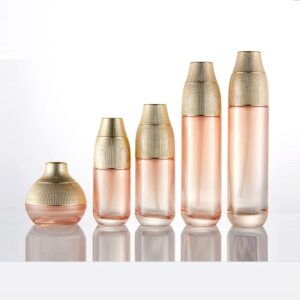
Explore los entresijos de la producción de moldes para botellas de vidrio, desde los tipos y procesos hasta las distinciones técnicas, destacando las innovaciones que impulsan la precisión, la escalabilidad y la rentabilidad.

Descubra el proceso de flocado electrostático en envases, que realza las botellas de vidrio para cosméticos con texturas lujosas, colores vibrantes y diseños ecológicos para productos de primera calidad.

Descubre los 10 mejores perfumes de mujer, con lujosas fragancias en elegantes frascos de cristal. Encuentra hoy tu fragancia perfecta para cualquier ocasión.
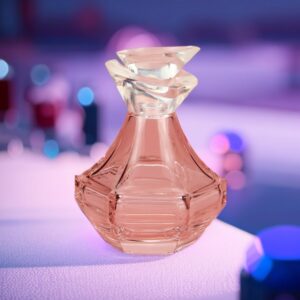
Mejore sus envases con material de envasado de vidrio. Aprenda a conseguir un aspecto mate con nuestra guía informativa.
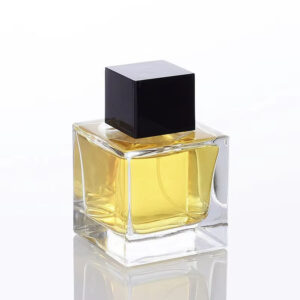
Descubra si los frascos de perfume son reciclables y cómo deshacerse de ellos de forma sostenible. Una guía de reciclaje, reutilización y reducción de residuos para los amantes de los perfumes.
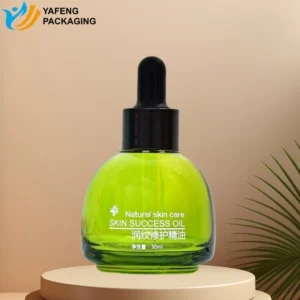
Descubra cómo el recubrimiento por pulverización mejora los envases de perfumes y productos para el cuidado de la piel al mejorar el aspecto, la identidad de marca, la durabilidad y la seguridad con tecnología avanzada.
Explore los envases personalizados frente a los de stock para el cuidado de la piel. Descubra cómo las soluciones de Yafeng potencian la identidad de marca, la calidad y la eficiencia en esta guía detallada.

Descubra cómo el spray de color degradado transforma los frascos de vidrio para cosméticos, mejora la imagen de marca y aumenta el atractivo del producto con las opiniones de los expertos de Yafeng Packaging.
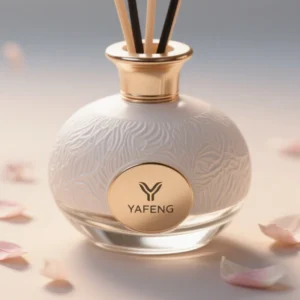
Descubra cómo funciona la aromaterapia con ratán y por qué los frascos de vidrio son la mejor opción por su aroma duradero, su seguridad y su envase sostenible y elegante.
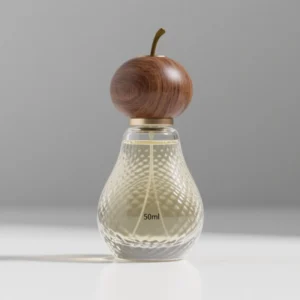
Descubra las 10 mejores maderas para tapones de perfume, comparando textura, pros, contras y precio para ayudarle a elegir el mejor material para un envase elegante y de alta calidad.
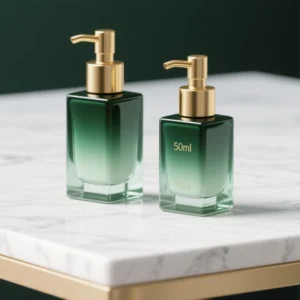
Explore los frascos de vidrio para cosméticos -seguridad, ventajas ecológicas, tipos, coloración, costes de moldeado, MOQ y consejos de producción- en una guía experta y rica en datos.
Envíanos un mensaje por WhatsApp.